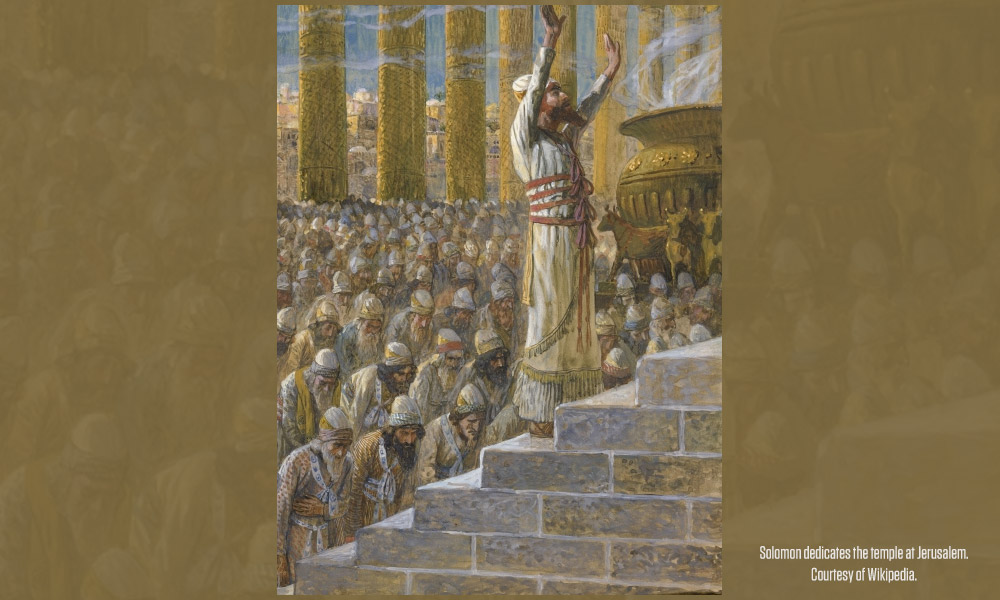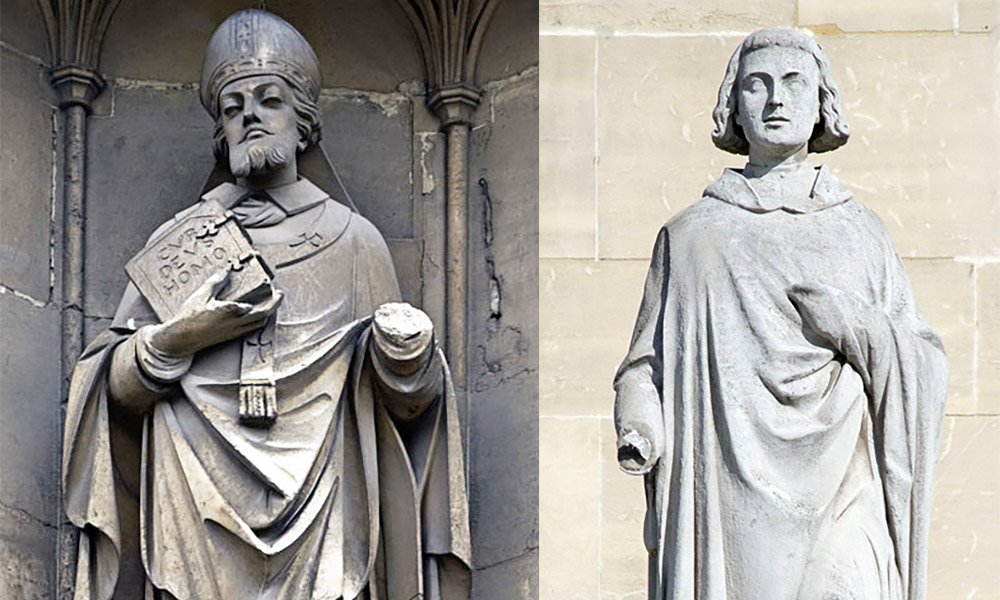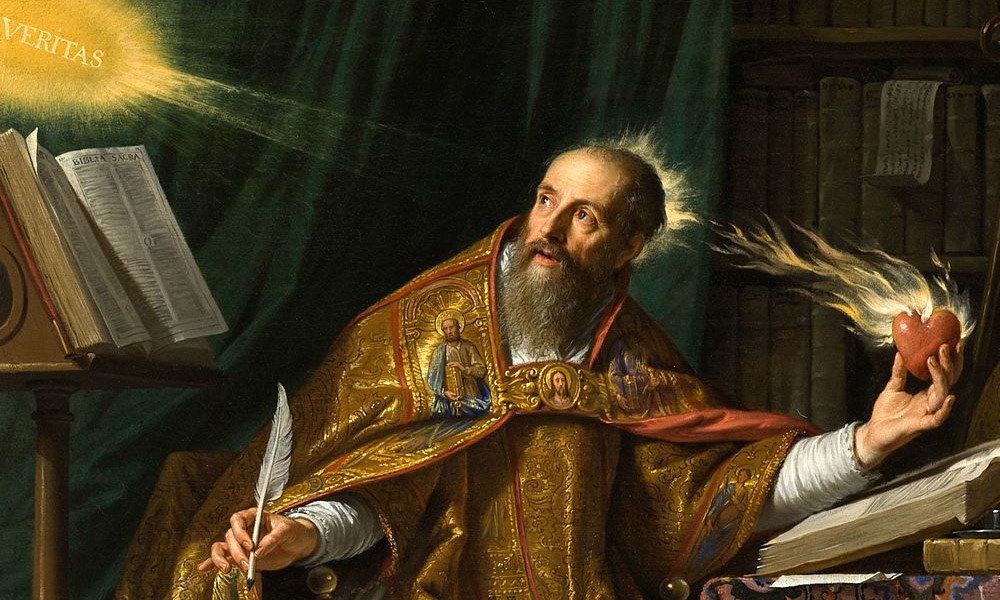
Do you think that the Jewish and Christian conception of God has always been purely monotheistic? Think again! This article discusses and explores the evolution of the Judeo-Christian God down through the ages.
Introduction: How Monotheistic Is the Judeo-Christian Tradition?
Above all things, a staunch belief in the existence of just One God is that which has distinguished the religion of Judaism from all others in the ancient world; Judaism was the world’s first monotheistic religion, the world’s pioneers in the exclusive worship of One God, the Creator of Heaven and Earth. At least that’s what we were taught in Sunday school – but the real story may not be that simple. Interestingly enough, the first clues that the real story may be much more nuanced and complex come from the Bible itself, from the Book of Genesis:
And God said, Let us make man in our image, after our likeness:
– Genesis 1: 26
Hold on a minute! If God is One God, then where did the “us” and “our” come from? A little later on, we get another clue when Adam and Eve are driven out of the Garden of Eden:
And the Lord God said, Behold, the man is become as one of us, to know good and evil:
– Genesis 3: 22
What? As one of us? Where did the us come from? Especially when the passage starts out with the Lord God, which is obviously singular. Perhaps the Lord God was talking to his angels, but the creation of the angels by God was not part of the preceding creation narrative – oops! What’s going on here?
There are many names for God in Judaism, and one of the main ones, which appears in the Book of Genesis, is Elohim. Anyone who knows a little Hebrew will know that all nouns that have an –im suffix are plural. This is in contrast to all other names for God found in Judaism, such as Hashem, Adonai, Yahweh, etc… This shift back and forth between singular and plural references to God in the Book of Genesis has led biblical scholars to posit that there were two teams of scribes that originally put the Book of Genesis together – scribes of the monotheistic Yahweh cult, and scribes of the more polytheistically oriented Elohim cult. The inconsistencies that appear when God is referred to in the Book of Genesis are piecemeal leftovers from a final editing process that was less than perfect.
Theologians, especially the more staunchly monotheistic ones, may argue that God never changes, that the God of Israel is One and the same yesterday, today, and forever after. Now, that may be true, but, while God Himself may not change, it can be argued that man’s understanding of God has definitely changed, grown and evolved over time. In this article, we will examine how the concept or understanding of God within the Judeo-Christian tradition has changed, grown and evolved over the years, centuries and millennia into the understanding of God that we have today.
Primitive Polytheism: The Original Religious Background of the Middle East
Most religious scholars nowadays agree that the original religion of man, whatever particular form it took in the various regions and localities of the globe, was polytheistic – a god for this, a goddess for that. Primitive men and women were totally in awe of the powerful natural forces that surrounded them, which governed their lives, and so, their initial religious instinct was to personify them all as gods and goddesses. This primitive polytheistic background or milieu was the original kind of religion found amongst the Canaanites, the Sumerians, and all other peoples of the Middle East. In Canaanite polytheism, there were many gods, but the chief among them was simply called El. This is the origin of the plural name for God, Elohim, which is found in the Book of Genesis, which could be translated as “El and his heavenly host of lesser gods and goddesses”. It is no secret to anyone who has studied the Old Testament that the ancient Israelites were always backsliding into polytheism and idol worship: Moses comes down from Mount Sinai and sees his people worshiping a golden calf; Elijah goes up against the priests of Baal, challenging them to a showdown, and winds up slaying many of them. At the time that the Book of Genesis was written, it seems, the staunchly monotheistic Yahweh cult had pretty much taken control, but there were still vestiges of primitive Canaanite polytheism lingering on.
Henotheism: God and Company
The next step forward towards monotheism from primitive polytheism was Henotheism, in which one god – or goddess – of the original pantheon has established or ensconced him or herself in a position of dominance or superiority over all the other lesser gods and goddesses. And so it was with Canaanite polytheism – El had risen to a position of dominance and superiority over all the lesser gods and goddesses. And so, we have Elohim – El and all his retinue of lesser gods and goddesses. Now – what is the real difference between an openly henotheistic scheme of a “boss” god and his retinue of lesser gods and goddesses, and the idea that God has His retinue of angels in the celestial firmament? It may be more of a question of semantics than anything else. You could also work your way backwards from pure monotheism towards a more henotheistic scheme of divinity, positing that God must get mighty lonely up there in heaven all by himself – so he needs a retinue of angels to keep Him company. Or, God is like the CEO of a large corporation, who needs administrators to carry out His divine work. The Canaanite “boss god” El lingers on in the names of the Archangels: Gabriel, Michael, Rafael, Uriel, etc…, as well as in the names of some Old Testament prophets, like Samuel, with the suffix –el denoting god or divinity.
Yahweh as the Tribal God of Israel: My God’s Better than Your God
The next step forward in the march towards monotheism, in which the children of Israel finally got closer to monotheism than to primitive polytheism, was the notion of Yahweh as the tribal god of the Israelites in contrast to all the lesser gods and goddesses that were worshiped by neighboring nations and peoples. Yahweh is seen as the Supreme God to whom the Israelites owe their exclusive worship and devotion, but that doesn’t mean that other gods don’t exist. But these other gods worshiped by other nations and peoples are definitely inferior to the God of Israel. “My God’s better than your god” is the main message here, and no one can argue that, in the Old Testament, a lot of ink is spilled driving home this message. Israel’s Yahweh is constantly going up against other gods and goddesses and proving His superiority, and that He alone is fit to be worshiped. From acknowledging Yahweh’s superiority, it’s only a short step to declaring that Yahweh alone is real, and all other gods and goddesses are false – often because they can’t really deliver the goods when it comes to helping the devotee in times of real crisis or need. The concept of Yahweh as the tribal God of Israel also led to a very warlike mindset, in which the Israelites march on to victory over their rivals due to the superiority of their God. There’s definitely a lot of patriarchal religious machismo going on here.
Mature Monotheism: The God of Israel as the Universal God of All
Sometime after Israel’s return from its chastisement in the Babylonian captivity, after the building of the second temple in Jerusalem, the notion of the God of Israel being the Universal God of All began to dawn in the hearts and minds of the people of Israel. The God of Israel may be invisible, incorporeal and totally transcendent, but He alone is real and fit to be worshiped. All other peoples and nations, worshiping other gods, were actually worshiping illusions – or, if your spiritual mindset was more compassionate and inclusive, they were all striving to worship the One True God, but doing so in very indirect and imperfect ways. God may have made a special covenant with the Israelites, but He was, in reality, the God of All, the Creator of Heaven and Earth, and everything in the universe. As the Creator of human beings, God was also the Creator of the human mind, and therefore superior to it; therefore, God was also totally transcendent, and even beyond the capability of the human mind to conceive or comprehend. With this universal conception of the One True God, Jewish monotheism, I feel, finally reached its classical state of true maturity; this was the spiritual legacy that Jesus inherited.
Monotheism and Polytheism Find Common Ground in Monism
If one digs deeper to find the true origins of Christianity behind the surface appearances of what Christians are told to believe, one finds that Christianity is, in fact, a hybrid religion born of the fusion or intermingling of the Judaic and Hellenistic streams of religion and spirituality. The Judaic and Hellenistic spiritual traditions couldn’t have been more different in their original state, with Judaism being insular and fiercely monotheistic, and Hellenism being very open, cosmopolitan and decidedly polytheistic in its worship of the Olympian gods and goddesses. But by the time of Jesus’ advent, the original polytheism of the Hellenistic spiritual tradition had evolved to the point where it could reconcile its native polytheism with monotheism in Monism, or a Monistic conception of Deity. Basically, Monism posits that there is an absolute, universal, and transcendent God of All behind all lesser, personalized forms of deity, which exists as the ultimate Source of all divinity. “Worship the gods if you must, but let your first duty be to know thyself,” declared Socrates. And in truly knowing oneself at the deepest level of one’s being, one was actually knowing the transcendent, absolute God of All, since the Bible declares that man is made in the image of God. The Greek or Hellenistic tradition had finally come to this point via the spiritual thinking and reflection of Plato and other classical Greek philosophers. As one early church father put it, Greek philosophy was finally ready to accept the sublime Truth of the Christian gospels.
Male and Female Created He Them: What about the Goddess?
For the most part, the Judaic spiritual heritage was very patriarchal, being dominated by the priests of Yahweh, often characterized as a wrathful, masculine Sky God. Even in Christianity today, God is referred to as He, using the masculine pronoun. There are those who maintain that God the Absolute, being invisible and incorporeal, is also beyond gender, but somehow, calling God It feels too cold and impersonal – so we use the masculine pronoun He. But the primordial spiritual milieu of the ancient Middle East, in addition to being polytheistic, also had a strong tradition of goddess worship; you could even say that Judaism was like an island of patriarchal monotheism swimming in a sea of polytheism and goddess worship – so it was virtually impossible for Judaism not to be touched by it. A lot of these ancient goddesses had male consorts, and there were many myths depicting these divine couples, involving potent themes like death and rebirth. There is also a legend that the God Yahweh Himself had a consort, who was worshiped alongside him in Solomon’s temple: the goddess Asherah.
In the Old Testament Book of Proverbs, Wisdom is portrayed as a goddess; some see this as a sign of Hellenistic influences creeping into Judaism. In the following passage from the Book of Proverbs, the goddess Wisdom tells her story:
The Lord possessed me in the beginning of his way, before his works of old. I was set up from everlasting, from the beginning, or ever the earth was. When there were no depths, I was brought forth; when there were no fountains abounding with water. Before the mountains were settled, before the hills was I brought forth; while as yet he had not made the earth, nor the fields, nor the highest part of the dust of the world. When he prepared the heavens, I was there; when he set a compass upon the face of the depth: When he established the clouds above; when he strengthened the fountains of the deep: When he gave to the sea his decree, that the waters should not pass his commandment: when he appointed the foundations of the earth: Then I was by him, as one brought up with him: and I was daily his delight, rejoicing always before him; Rejoicing in the habitable part of his earth; and my delights were with the sons of men.
– Proverbs 8: 22 – 31
Lady Wisdom, or Sophia, was also a favorite goddess of the Christian Gnostics, who had many myths, or sacred allegories, about her. On the Kabbalistic Tree of Life, Chokmah, or Wisdom, is the second Sephirah, or emanational sphere, immediately below Kether, or God Himself, which is in keeping with Wisdom’s story, as presented in the Bible passage above. Older forms of Christianity, specifically Roman Catholicism and Eastern Orthodoxy, still revere the goddess in the form of the Virgin Mary, regarding her as an indispensible partner to Jesus in his salvific work. But the newer Protestant denominations, in an effort to get back to what they saw as the bedrock basics of Christianity, have, by and large, rejected reverence for the Virgin Mary, calling it a peculiar form of idolatry called Mariolatry. In addition, the Christian Gnostics also revered Mary Magdalene, and many still regard her as the Apostle to the Apostles. Jesus and Mary Magdalene can be seen as a divine couple, or God incarnate and His divine consort. Indeed, the whole subject of the Divine Feminine in the Judeo-Christian tradition is deep and vast.
Kabbalistic Emanationism: A Special Kind of Monism
In the early centuries of the Christian era, a new form of Jewish mysticism called Kabbalah finally came into its own. Previous to this, it was claimed that Kabbalah had been a secret oral teaching passed down from master to disciple since the time of Moses. In a nutshell, Kabbalah can be seen as a metaphysical system that explains how the original Oneness of God became the many of God’s Creation. The core feature of Kabbalah was the mystical tree of Life, or Etz Chaim, consisting of ten emanational spheres, or Sefiroth; each sphere or Sephirah embodied a certain divine quality, with examples being Chokmah (Wisdom); Binah (Understanding); Tifereth (Beauty); Hod (Glory), and so on. The principle behind the generation of these divine spheres or emanations is that the totality of God’s creative power and energy overflows the Divine Source and personalizes itself in these divine qualities or attributes, which can be better understood and comprehended by the finite human mind and intellect. Kabbalistic emanationism can also be seen, I believe, as an attempt by Jewish mystics to reconcile the strict monotheism of Judaism with Hellenistic polytheism and Monism.
The Christian Godhead: One God in Three Persons
Jews believe in a God who is an Absolute Unity – One without a second. Christians, on the other hand, believe in a triune Godhead – that is, a Holy Trinity, or one God in three persons. Many, if not most, Christians have been so thoroughly indoctrinated in Trinitarian thinking that they literally believe that their three-in-one Godhead is basically the same as the Jewish concept of God as Absolute Oneness; you might say that they have their Trinitarian blinders on. Although many Christian apologists claim to have found Bible verses in the New Testament supporting the doctrine of the Trinity, these so-called proof texts fall far short of being a clear, explicit description of the doctrine. You can believe that God the Father exists, that Jesus was the Son of God, and you can also believe in the Holy Spirit, and that one must baptize people in the name of all three, but that still falls short of the integration of all three of them into a triune Godhead. A Christian can read that God’s Spirit moved upon the face of the waters in the Book of Genesis, and equate that with the Holy Spirit of the Christian Trinity, but a Jew would not see things quite that way when reading the same passage.
I feel that the basic idea of a single God expressing Himself through three persons, or hypostases, is essentially a Monistic idea of a transcendent God the Absolute, who is beyond all name and form, expressing or manifesting Himself in three personifications of Himself. There are three pillars on the Kabbalistic Tree of Life. God the Father is God Transcendent; God the Son is God immanent and manifest; and the Holy Spirit is the power of God in action. From an eclectic or universalist perspective, it could be argued that all concepts, models or paradigms of God each have their own particular strengths or virtues on the one hand, as well as their own particular weaknesses or drawbacks on the other. And it seems that the main strength of the Christian Trinitarian conception of God is that of an emphasis upon relationship, and more specifically, a relationship of self-emptying love as each person of the Holy Trinity flows into and connects with the others; the Greek term for this “dancing around” of self-emptying love is Perichoresis. While the strictly Unitarian God of the absolute, pure and pristine monotheism of Judaism or Islam can seem too remote and aloof at times, the Trinitarian God of Christianity, its proponents claim, is all about giving, relationship and Love.
Why and how did the Christian Trinity come to be? That’s a matter open to debate, but within a couple of centuries after the Council of Nicea, it had been put into its final form. It has been said that the Christian doctrine of the Holy Trinity is probably the most sophisticated theological concept ever devised by man, if one were really to study and comprehend it in its totality. I take a rather matter-of-fact view of the Christian Trinity: The Council of Nicea put Jesus Christ, or God the Son, fully on a par with God the Father, being fully coexistent and coeternal with Him. Having a duality of God the Father versus God the Son was too divisive and dualistic, and prone to having one being put at odds with the other. Therefore, a third person had to be added to the mix to round out the original duality into a Trinity, which is much more flowing and harmonious by its very nature. Definitely, things would have been a lot simpler theologically without the deification of Jesus, and a Unity is much simpler than a Trinity. Of the three Abrahamic religions – Judaism, Christianity and Islam, Christianity could be seen as the “black sheep” because it strayed from the original pure, pristine monotheism of Judaism.
Conclusion: Man’s Search for and Conception of God
It has been said that the whole of the Jewish Bible is the story of the Jewish people’s search for God, and their interaction with Him. And as this search progressed, and as God revealed more and more of Himself to the Israelites through various prophets or messengers, the understanding of God grew among those who viewed themselves as God’s chosen people. One can also reduce this story of a search for, and concept of, God to a personal level as well; it could even be argued that each person’s inner view or concept of God is ultimately unique unto themselves, and that no two people view God in exactly the same way. And I suppose that this principle of individuality even applies to atheists who have rejected the concept of God altogether; no two atheist’s paths that led them to their final rejection of God are identical. That’s why I believe in the freedom of individual conscience in religious and spiritual matters, and in the separation of church and state. In the modern secular democratic state, each person is free to believe, or not to believe, as they themselves see fit.



